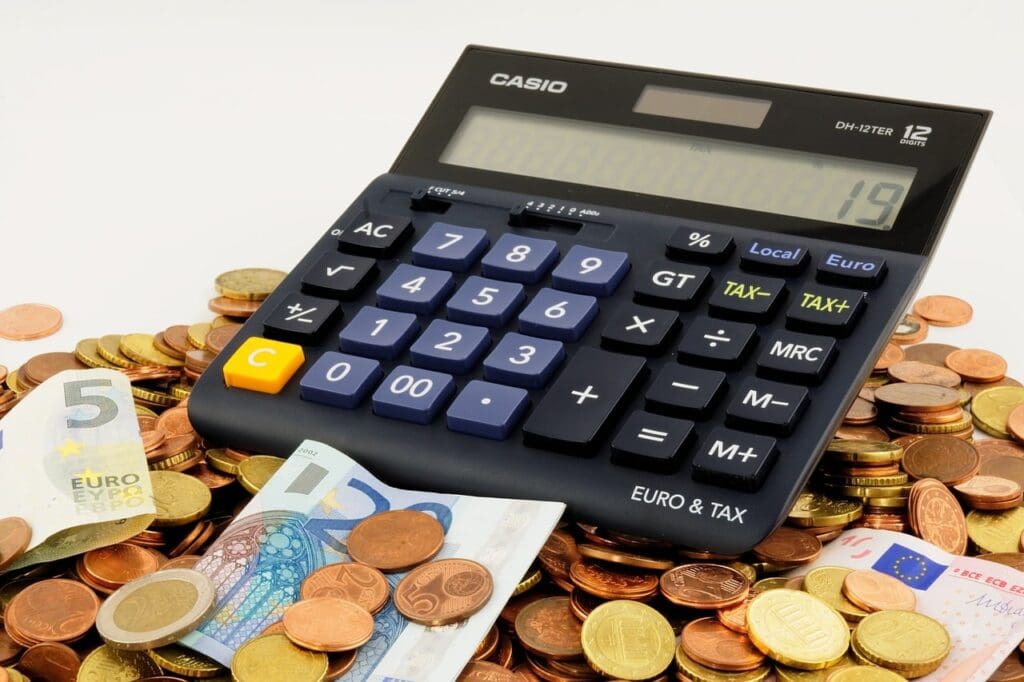Financial security is about more than just earning money—it’s about having a plan when things don’t go as expected. An emergency fund ensures you’re prepared for life’s unexpected expenses, whether it’s an urgent medical bill, car repair, or temporary job loss.
In Australia, cost-of-living pressures are rising, making it more important than ever to have savings set aside. But how much should you save? Where should you keep it? And how do you start when money is already tight?
This guide will use up-to-date information to help you build an emergency fund that suits your lifestyle and financial situation.
Let’s Get Straight to the Point
- What is an emergency fund? A safety net for unexpected expenses like medical bills, car repairs, or sudden job loss.
- How much should you save? Three to six months' worth of essential expenses, but even $1,000 is a good start.
- Where should you keep it? A high-interest savings account, money market fund, or an offset account linked to your mortgage.
- How do you start saving? Set small, realistic goals and automate deposits to build up your fund over time.
- What should you avoid? Using your emergency fund for non-urgent expenses and failing to replenish it after use.
If you want to understand why and how to make your emergency fund work, keep reading.
Why an Emergency Fund is Essential

1. Protecting Yourself from the Unexpected
Life is unpredictable. Whether it’s a sudden illness, job loss, or urgent home repairs, unexpected expenses can quickly derail your budget. Without a savings buffer, many Australians rely on credit cards or payday loans—leading to high-interest debt.
An emergency fund helps by providing immediate access to cash when you need it most. Rather than taking out a loan or using a credit card with high interest rates, you can draw from your savings without accumulating debt.
A survey conducted by the Reserve Bank of Australia (RBA) in December 2024 found that 45% of Australians would struggle to cover a $1,000 unexpected expense without borrowing money. This highlights why it is important to have even a small emergency fund to avoid financial distress.
2. Avoiding Debt and Financial Stress
Without savings, people often resort to credit cards or payday loans, which have high interest rates and can trap them in a cycle of debt.
For example, if you use a credit card with a 20% interest rate to pay for a $2,000 car repair and only make minimum monthly payments, you could end up paying hundreds of dollars in interest over time.
By having cash set aside for emergencies, you can protect yourself from financial stress and avoid unnecessary debt.
How Much Should You Save?
1. Finding Your Target Savings Amount
Most financial experts recommend saving three to six months' worth of essential expenses. However, this amount varies based on individual circumstances.
If you are unsure how much you need, here’s a step-by-step approach to calculate it:
- Identify essential expenses:
- Rent or mortgage payments
- Utility bills (electricity, water, internet)
- Groceries
- Insurance premiums
- Loan repayments
- Transport costs (petrol, public transport)
- Multiply your total monthly expenses by three to six:
- If your essential expenses are $3,500 per month, aim for between $10,500 and $21,000.
2. Who Needs a Bigger Emergency Fund?
Some Australians may need a larger safety net based on their situation:
- Freelancers and self-employed workers – Income can fluctuate, so it’s recommended to save six to twelve months’ expenses.
- Single-income households – With only one income stream, financial stability is more important, making a larger emergency fund necessary.
- Homeowners – Unexpected home repairs (e.g., plumbing issues or roof damage) can be costly.
- Families with children – Kids come with extra expenses, from medical costs to school fees, making a bigger emergency fund beneficial.
For those who don’t have the capacity to save large amounts right away, remember that even $1,000 in an emergency fund can prevent financial hardship.
Where Should You Keep Your Emergency Fund?
1. Best Places to Store Your Savings
Your emergency fund should be:
- Easily accessible – You should be able to withdraw it quickly in case of an emergency.
- Separate from everyday spending accounts – To reduce temptation.
- Earning some interest – To maintain its value over time.
2. Recommended Options
1. High-Interest Savings Accounts
- These accounts offer competitive interest rates while keeping your money liquid.
- Many banks in Australia now provide 2.5% - 4% annual interest on high-yield savings accounts.
2. Offset Accounts (for Homeowners)
- If you have a mortgage, keeping your emergency savings in an offset account can reduce the interest on your loan.
- However, make sure your funds are easily accessible in an emergency.
3. Money Market Funds (MMFs)
- These offer higher interest rates than regular savings accounts but come with some restrictions.
- Consider MMFs if you are saving more than $10,000.
How to Start Saving—Even on a Tight Budget

Setting Realistic Savings Goals
Saving doesn’t need to happen overnight. Instead, focus on small, consistent steps.
Step 1: Start with a Mini Emergency Fund
- Aim for $500 to $1,000 as an initial goal.
- This is enough to cover minor emergencies and prevent unnecessary borrowing.
Step 2: Automate Your Savings
- Set up a direct debit to a dedicated emergency savings account.
- Even $20 a week adds up to over $1,000 a year.
Step 3: Cut Unnecessary Expenses
- Identify non-essential spending you can reduce.
- Examples: Subscriptions, takeaway coffee, unused memberships.
Step 4: Boost Savings with Windfalls
- Allocate tax refunds, work bonuses, or extra income to your emergency fund.
When to Use Your Emergency Fund (And When Not To)
1. Legitimate Reasons to Use It
Only tap into your emergency fund for genuine emergencies, such as:
- Medical expenses not covered by Medicare or insurance.
Urgent car repairs essential for work or safety. - Unexpected job loss affecting income.
2. What’s NOT an Emergency?
Avoid using your fund for:
- Holidays or non-urgent travel.
- Shopping sprees or entertainment.
- Routine home maintenance (budget separately for this).
Common Mistakes to Avoid
Even with the best intentions, many people make mistakes when building an emergency fund. Avoid these common pitfalls to ensure your savings work when you need them most.
1. Not Having a Clear Goal
Without a specific target, it’s easy to save too little or lose motivation. Instead of vaguely “saving for emergencies,” calculate your essential monthly expenses and set a clear goal—such as $1,000 initially, then three to six months’ worth of expenses. Breaking it into milestones makes saving feel more achievable.
2. Keeping Funds in the Wrong Place
An emergency fund should be accessible but not too easy to spend. Keeping it in your everyday transaction account can lead to unnecessary withdrawals while investing it in stocks or property can put your money at risk.
Best options include:
- High-interest savings accounts – Accessible and earns interest.
- Offset accounts (for homeowners) – Reduces mortgage interest while keeping funds available.
- Money market funds – Suitable for larger emergency savings but may have withdrawal limits.
Avoid storing cash at home, locking funds in term deposits, or risking it in the stock market.
3. Not Adjusting Your Fund Over Time
Your financial needs change over time, and your emergency fund should keep up. As expenses rise (due to inflation, mortgage changes, or family growth), review your savings annually to ensure they cover at least three to six months of living costs.
If you use money from your fund, make it a priority to replenish it as soon as possible. Regularly reassessing your emergency savings ensures you’re always financially prepared.
Conclusion
An emergency fund is one of the best financial decisions you can make. It reduces stress, prevents debt, and gives you financial control.
You don’t need to save a fortune overnight—just start. Every dollar moves you closer to financial security, whether $10 a week or $100 a month.
Your next steps:
- Open a high-interest savings account.
- Set an initial savings goal (even $500 helps).
- Automate savings to make it effortless.
- Review and adjust your emergency fund annually.
Taking action today ensures you’re prepared for whatever life throws your way. Your future self will thank you!
Starting an emergency fund doesn’t require a large amount upfront. Setting aside $20 per week can add up to over $1,000 a year, providing a solid financial cushion.
The time required depends on your savings rate and goal. If you save $50 per week, you’ll reach $2,600 a year, but starting small and increasing contributions over time is the best approach.
A high-interest savings account is the best option for easy access and security. An offset account can also help homeowners reduce mortgage interest while keeping funds available.
No, an emergency fund should always be in a low-risk, easily accessible account. Investments can lose value, and you might be unable to access your money when needed.
If you need to withdraw money, replenish it as soon as possible. Treat it like a bill by setting up automatic savings to restore your fund over time.




















